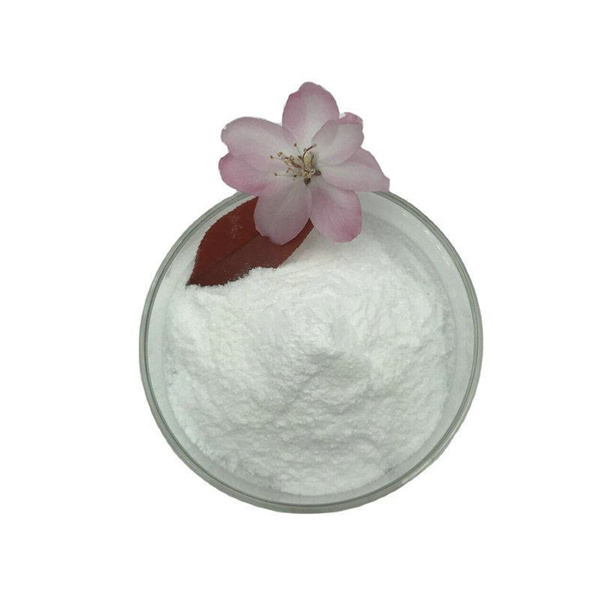
News
ژوئن . 30, 2024 10:20 Back to list
Comparing GHRP-2 and GHRP-6 Differences and Effects
GHRP-2 vs. GHRP-6 An In-depth Comparison
Growth Hormone Releasing Peptides (GHRPs) are synthetic hormones that stimulate the pituitary gland to release Growth Hormone (GH), playing a significant role in various physiological processes such as metabolism, body composition, and tissue repair. Two of the most commonly studied GHRPs are GHRP-2 and GHRP-6. Each has its unique characteristics, advantages, and potential applications, which make them interesting subjects for scientific research and therapeutic use.
GHRP-2, also known as hexarelin, is a potent and selective GHRP. It primarily binds to the Ghrelin receptor, leading to a strong and sustained release of GH. This peptide is known for its high specificity, causing minimal release of other hormones like Corticotropin-Releasing Hormone (CRH) and Prolactin. GHRP-2 has shown promising results in treating growth hormone deficiency in both adults and children, and it may have potential benefits in muscle regeneration, wound healing, and anti-aging therapies due to its GH-releasing effects.
On the other hand, GHRP-6 is another potent GHRP but with a slightly different mechanism of action. While it also stimulates GH release, it has a more pronounced effect on increasing appetite due to its interaction with the ghrelin receptor. This property makes GHRP-6 potentially useful for individuals suffering from cachexia or muscle wasting associated with chronic diseases This property makes GHRP-6 potentially useful for individuals suffering from cachexia or muscle wasting associated with chronic diseases This property makes GHRP-6 potentially useful for individuals suffering from cachexia or muscle wasting associated with chronic diseases This property makes GHRP-6 potentially useful for individuals suffering from cachexia or muscle wasting associated with chronic diseases
This property makes GHRP-6 potentially useful for individuals suffering from cachexia or muscle wasting associated with chronic diseases This property makes GHRP-6 potentially useful for individuals suffering from cachexia or muscle wasting associated with chronic diseases ghrp 2 vs ghrp 6. However, GHRP-6 can cause a higher release of Cortisol and ACTH compared to GHRP-2, which might be a concern for some users, especially those looking to minimize stress hormone production.
In terms of side effects, both peptides are generally well-tolerated, but individual responses can vary. GHRP-2 tends to have fewer side effects related to hunger stimulation, while GHRP-6's impact on appetite can be both an advantage and a drawback depending on the user's goals. Additionally, the half-life of these peptides differs, with GHRP-2 having a slightly longer duration of action, allowing for less frequent dosing.
In conclusion, GHRP-2 and GHRP-6, while sharing similarities in their function as GH stimulators, exhibit distinct characteristics that cater to different needs. GHRP-2's high specificity and reduced side effects make it appealing for therapeutic applications where precise GH release is desired. Conversely, GHRP-6's appetite-stimulating properties and potential benefits in muscle preservation could be beneficial for specific conditions. As with any medical intervention, a thorough understanding of these peptides and their implications is crucial before considering their use. Further research continues to explore the full potential and limitations of GHRP-2 and GHRP-6 in various clinical settings.
ghrp 2 vs ghrp 6. However, GHRP-6 can cause a higher release of Cortisol and ACTH compared to GHRP-2, which might be a concern for some users, especially those looking to minimize stress hormone production.
In terms of side effects, both peptides are generally well-tolerated, but individual responses can vary. GHRP-2 tends to have fewer side effects related to hunger stimulation, while GHRP-6's impact on appetite can be both an advantage and a drawback depending on the user's goals. Additionally, the half-life of these peptides differs, with GHRP-2 having a slightly longer duration of action, allowing for less frequent dosing.
In conclusion, GHRP-2 and GHRP-6, while sharing similarities in their function as GH stimulators, exhibit distinct characteristics that cater to different needs. GHRP-2's high specificity and reduced side effects make it appealing for therapeutic applications where precise GH release is desired. Conversely, GHRP-6's appetite-stimulating properties and potential benefits in muscle preservation could be beneficial for specific conditions. As with any medical intervention, a thorough understanding of these peptides and their implications is crucial before considering their use. Further research continues to explore the full potential and limitations of GHRP-2 and GHRP-6 in various clinical settings.
 This property makes GHRP-6 potentially useful for individuals suffering from cachexia or muscle wasting associated with chronic diseases This property makes GHRP-6 potentially useful for individuals suffering from cachexia or muscle wasting associated with chronic diseases
This property makes GHRP-6 potentially useful for individuals suffering from cachexia or muscle wasting associated with chronic diseases This property makes GHRP-6 potentially useful for individuals suffering from cachexia or muscle wasting associated with chronic diseases ghrp 2 vs ghrp 6. However, GHRP-6 can cause a higher release of Cortisol and ACTH compared to GHRP-2, which might be a concern for some users, especially those looking to minimize stress hormone production.
In terms of side effects, both peptides are generally well-tolerated, but individual responses can vary. GHRP-2 tends to have fewer side effects related to hunger stimulation, while GHRP-6's impact on appetite can be both an advantage and a drawback depending on the user's goals. Additionally, the half-life of these peptides differs, with GHRP-2 having a slightly longer duration of action, allowing for less frequent dosing.
In conclusion, GHRP-2 and GHRP-6, while sharing similarities in their function as GH stimulators, exhibit distinct characteristics that cater to different needs. GHRP-2's high specificity and reduced side effects make it appealing for therapeutic applications where precise GH release is desired. Conversely, GHRP-6's appetite-stimulating properties and potential benefits in muscle preservation could be beneficial for specific conditions. As with any medical intervention, a thorough understanding of these peptides and their implications is crucial before considering their use. Further research continues to explore the full potential and limitations of GHRP-2 and GHRP-6 in various clinical settings.
ghrp 2 vs ghrp 6. However, GHRP-6 can cause a higher release of Cortisol and ACTH compared to GHRP-2, which might be a concern for some users, especially those looking to minimize stress hormone production.
In terms of side effects, both peptides are generally well-tolerated, but individual responses can vary. GHRP-2 tends to have fewer side effects related to hunger stimulation, while GHRP-6's impact on appetite can be both an advantage and a drawback depending on the user's goals. Additionally, the half-life of these peptides differs, with GHRP-2 having a slightly longer duration of action, allowing for less frequent dosing.
In conclusion, GHRP-2 and GHRP-6, while sharing similarities in their function as GH stimulators, exhibit distinct characteristics that cater to different needs. GHRP-2's high specificity and reduced side effects make it appealing for therapeutic applications where precise GH release is desired. Conversely, GHRP-6's appetite-stimulating properties and potential benefits in muscle preservation could be beneficial for specific conditions. As with any medical intervention, a thorough understanding of these peptides and their implications is crucial before considering their use. Further research continues to explore the full potential and limitations of GHRP-2 and GHRP-6 in various clinical settings. Share
Latest news
-
Using tadalafil to promote hair growth and combat hair loss effectively.
NewsJul.10,2024
-
Generating a title similar to palmitoyl oligopeptide could be Oligopeptide containing palmitoyl for skincare benefits and rejuvenation.
NewsJul.10,2024
-
Similarity of the compound tra% 100mg/ml in different pharmaceutical formulations
NewsJul.10,2024
-
Negative impacts of tadalafil on health and well-being
NewsJul.10,2024
-
Anastrozole 0.5 mg twice per week for treatment of cancer patients
NewsJul.10,2024
-
Reviewing the effectiveness of kisspeptin in enhancing reproductive health and fertility.
NewsJul.10,2024
